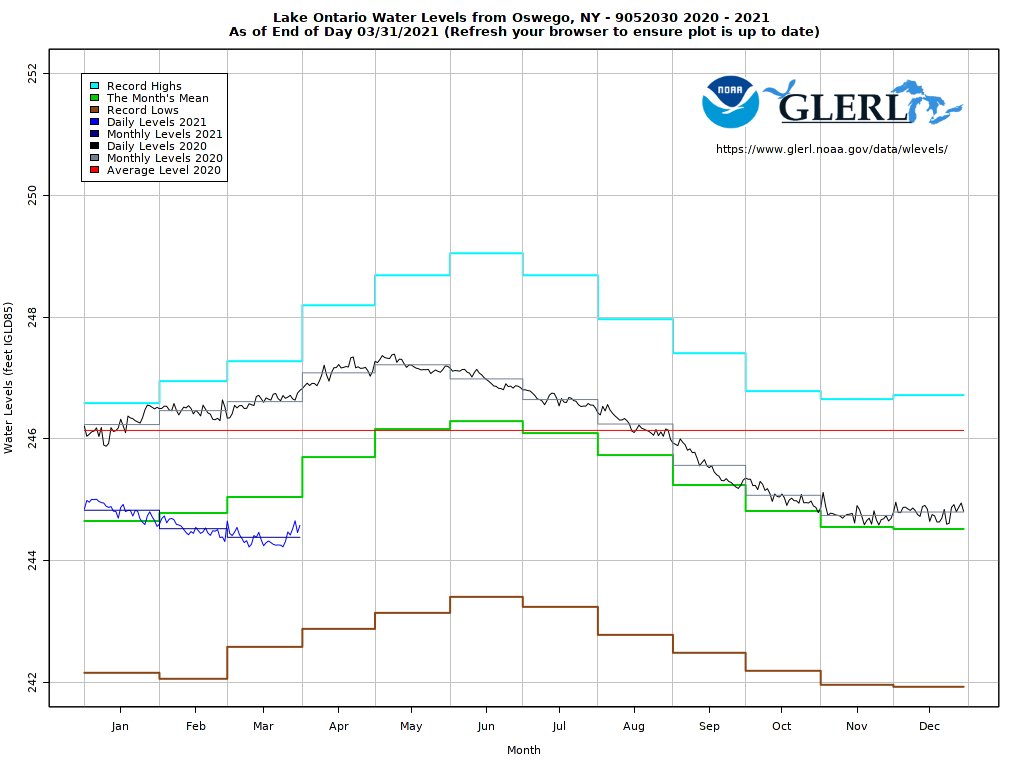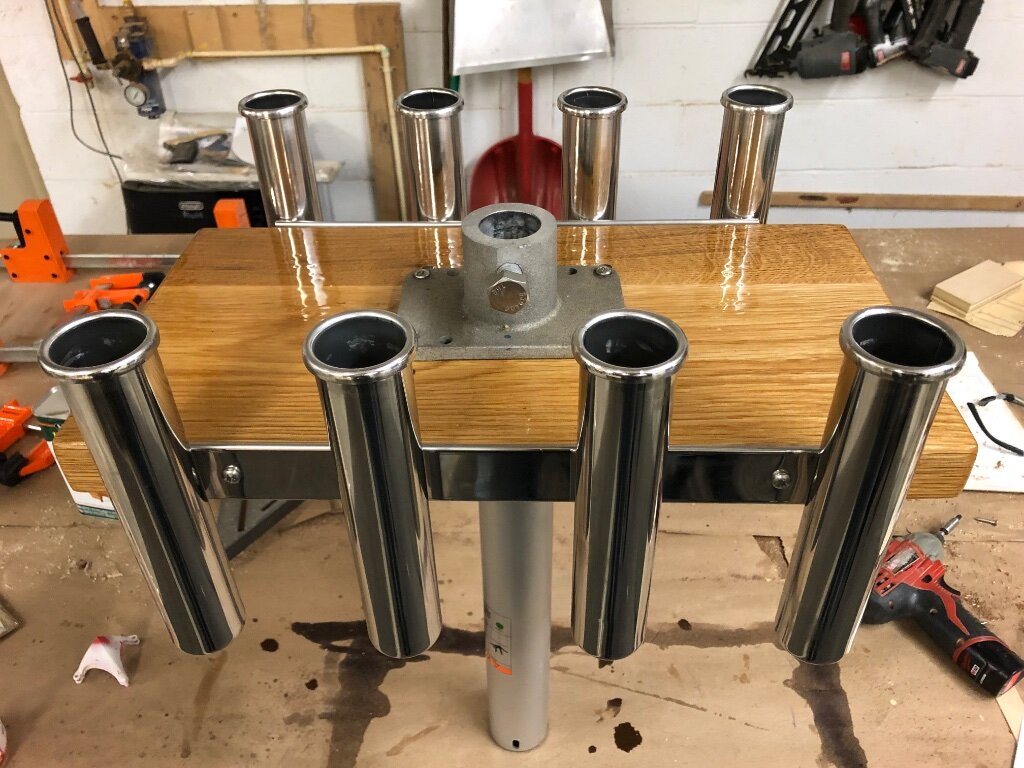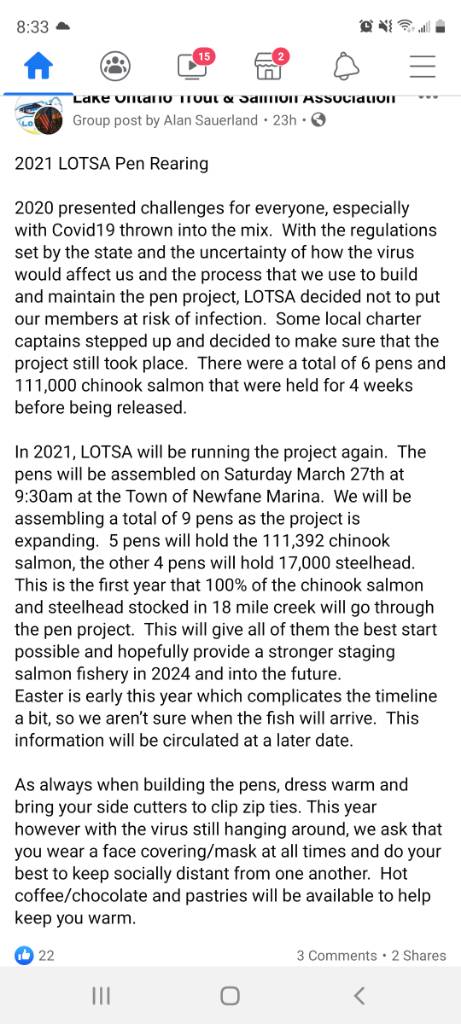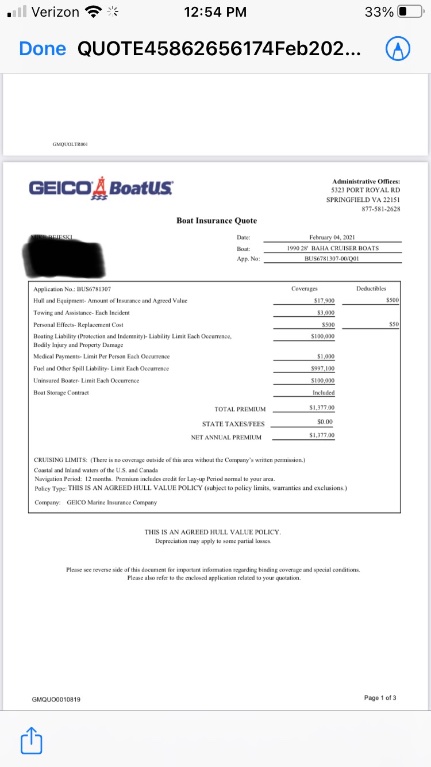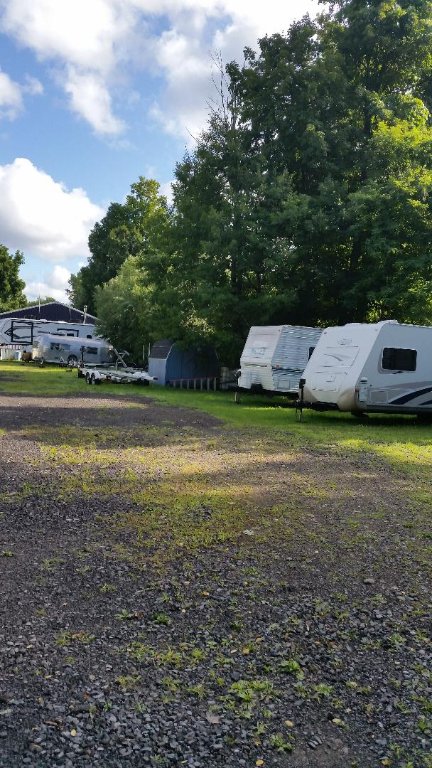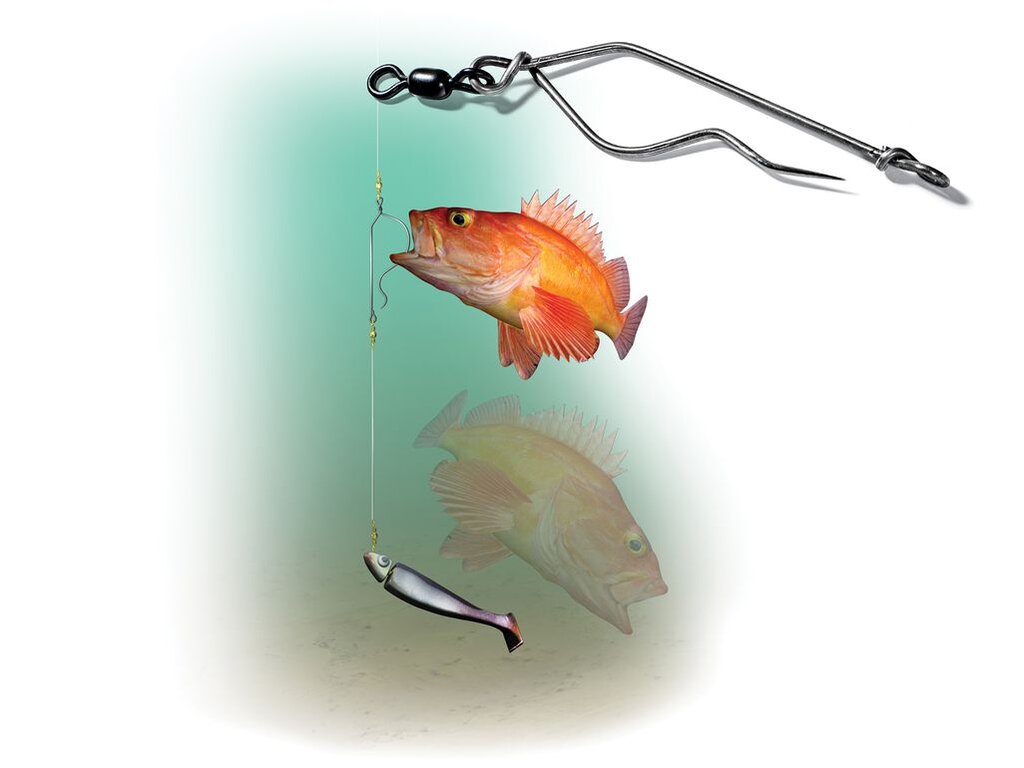-
Posts
508 -
Joined
-
Last visited
Content Type
Profiles
Forums
Events
Gallery
Store
Everything posted by mudflat
-

Join us LIVE 5pm Eastern Wed. 3/31
mudflat replied to Capt Vince Pierleoni's topic in Open Lake Discussion
Fish Hawk says a recording will be available on the Face Book page The interview will be posted in it's entirety on our Facebook Page afterwards and will be published to the Great Lakes Fishing Podcast (https://soundcloud.com/greatlakesfishingpodcast?mc_cid=7c77a4b67c&mc_eid=UNIQID) on Thursday. -
-

for sale : usa Winter pre-sale cut bait!
mudflat replied to RiggedSFC's topic in Classifieds - Buy, Sell, Trade or Rent
-

Can I Install a Planer Mast? Or No?
mudflat replied to nomis's topic in Questions About Trout & Salmon Trolling?
-
So then, is this year going to be the same ports as Legacy posted last year ? Legacy Moderator 1,084 6,667 posts Location Lake Ontario Home Port Sandy Creek, Hamlin, NY Boat Name The Legacy Posted February 22, 2020 Let me clarify this post.... These are the only ports that will be getting Chinook Salmon stocking this year. Niagara, Olcott, Oak Orchard, Genesee, and Oswego will be pen rearing 100% of all stocked fish at these sites. Niagara River Olcott Oak Orchard Genesee River Oswego River Salmon River Black River (Jefferson County) These sites will be receiving ZERO Chinook stockings for 2020 and this includes pen rearing and direct stocks. Wilson Harbor Sandy Creek (Monroe County) Sodus Bay Fair Haven South Sandy Creek (Jefferson County) This isnt about just eliminating pen rearing at these sites but all stocking at these sites.
-
-
Where are you planning on fishing and how deep? I agree with either torpedo's or Shark types weights, two members on here make these type, Troutman and Bikini bottom, check the classified ads The currents on Lake O can cause havoc with pancake weights
-
DEC Releases 2018-2020 Report on Restoration and Protection of New York's Great Lakes Highlights Efforts and Investments to Promote Environmental Justice, Protect Source Waters, and Improve Community Resilience to Flooding State Department of Environmental Conservation (DEC) Commissioner Basil Seggos today released the 2018-2020 progress report (PDF) on the restoration and protection of New York's Great Lakes resources. Prepared every two years, the report highlights partnerships and achievements completed during the prior two years, including improving resilience to coastal and tributary flooding impacts, protecting source waters, and accelerating restoration initiatives in communities that have been historically and disproportionately impacted by environmental pollution, called Environmental Justice communities. "The Great Lakes are an irreplaceable source of clean drinking water and support a wide range of opportunities for outdoor recreation that New Yorkers and visitors can enjoy all year round," Commissioner Seggos said. "The New York Great Lakes Action Agenda continues to serve as an integrated action plan to promote these sustainable uses while also protecting water quality, fish and wildlife habitat, and the communities dependent on these resources. The 2018-2020 report showcases how state, regional, and local partners have worked together to protect our shared natural resources, contributing to an improved quality of life for the region and state." The 2018-2020 Great Lakes Program Report (PDF) highlights significant achievements, including: Restoring habitats and recreational uses for Environmental Justice communities within the Rochester Embayment and Buffalo River Areas of Concern; Adapting to storms and flooding by building back smarter and enhancing the resilience of Great Lakes coastal communities through Governor Andrew M. Cuomo's $300 million Lake Ontario Resiliency and Economic Development Initiative, Resilient NY, and other initiatives; Improving and protecting critical water resources in waterways that drain to Lake Erie, Lake Ontario, and the St. Lawrence River to ensure waters are swimmable, drinkable, and fishable; and Securing $19 million in federal Great Lakes Restoration Initiative (GLRI) funding for 117 projects, complementing the State's initiatives and commitment to restoring the shorelines of New York's Great Lakes. Substantial progress was made toward advancing the shared goals of New York's Great Lakes Action Agenda by applying adaptive, ecosystem-based management approaches balancing the needs of communities, nature, and the economy. These approaches prioritize science-based decision making. New York Secretary of State Rossana Rosado said, "New Yorkers along our Great Lakes coast know how essential the Lakes are to the region's sense of place and the well-being of our communities. The Department of State is proud to partner with the Department of Environmental Conservation and our state and local colleagues to help communities identify opportunities for growth and increased collaboration that will lend to the region's tremendous potential. Over the past year we have worked hard to advance actions that will utilize our abundant access to the water, increase our resiliency to coastal changes, and preserve the unique and special character of the region." New York State Parks Commissioner Erik Kulleseid said, "New York State Parks oversees 140 miles of Great Lakes Shoreline from Lake Erie to the St. Lawrence River, hosting millions of people from around the world drawn to the State Parks and Historic sites along these incredible waters. We look forward to our continued partnership with the State Department of Environmental Conservation and other state and local partners to expand on the critical restoration and protection efforts we've achieved." In the coming year, DEC's Great Lakes Program will update the Great Lakes Action Agenda for the next 10 years. The updates will ensure the Action Agenda reflects emerging challenges, new science, and innovative approaches in order to address the most pressing issues within our Great Lakes communities and ecosystems. DEC encourages interested individuals and organizations to get involved at the local and regional level and to share your ideas and goals for the lands and waters of our Great Lakes basin. To learn more and sign up for email updates, visit DEC's website, or email us at [email protected]. https://www.dec.ny.gov/press/press.html
-

Lookin for some advice with Boat Insurance
mudflat replied to Hachimo's topic in Open Lake Discussion
-

Lookin for some advice with Boat Insurance
mudflat replied to Hachimo's topic in Open Lake Discussion
-
https://amishoutfitters.com/catalog/index.php?main_page=product_info&products_id=130
-
-
I used a seaqualizer last year on my boat and found that you have to have it all ready to deploy conveniently so that you can get the fish back in the water and downstairs as quickly as possible. When fishing deep I only use 2-3 riggers so I leave mine hooked up to my 4th rigger all the time and just snap it on the jaw and send her down . I don't know how much it helps the survival rate but it can't hurt and at least I don't have to watch any floaters behind the boat. If the fish is bleeding or in too bad of shape it still goes in my box.
-
Hodge's Marine has them https://www.hodgesmarine.com/gar120-2020-00-garmin-120202000-wired-remote-for-tr1-gold.html
-
DEC Announces Oct. 31 Opening of Salmon River Lower Fly-Fishing Area DEC Encourages Anglers to Fish 'SMART' to Protect Resources and Other Anglers The New York State Department of Environmental Conservation (DEC) today announced that the Lower Fly-Fishing Section of the Salmon River will be open for catch-and-release fishing starting Saturday, Oct. 31, marking the success of actions taken by the Salmon River Flow Management Team to mitigate the impacts of low-water flows at the start of the salmon run. Recommendations to prevent the spread of COVID-19 remain in effect to ensure the health and safety of the public. Under a federal license, Salmon River seasonal baseflows are typically increased from 185 cubic feet/second (cfs) to 335 cfs on Sept. 1, providing that water levels in the Salmon River Reservoir are above a critical threshold. This summer, below-average precipitation resulted in low and declining water levels in the reservoir. The Executive Committee of the Salmon River Flow Management Team, comprised of natural resource agencies and Brookfield Renewable hydroelectric facility that regulates reservoir water levels, delayed the annual Sept. 1 increase in baseflow and canceled scheduled whitewater releases over the Labor Day weekend. These actions conserved reservoir water to maintain suitable flows throughout the salmon spawning run. Because significant rainfall was not forecasted, DEC recommended delaying the scheduled baseflow increase. DEC's recommendation was based on abnormally high-water temperatures coupled with low-water flow in Salmon River tributaries, including Beaverdam Brook, where migrating Chinook salmon access the DEC Salmon River Fish Hatchery for egg collections that support the State's successful stocking program. Increasing baseflows prematurely would have likely enticed the Chinook salmon already "staging" in Lake Ontario to enter the Salmon River on their spawning migration, which could have stranded and/or killed fish if temperatures remained high. These fish cannot reach DEC's hatchery without sufficient water levels in Beaverdam Brook. To increase the probability that sufficient numbers of salmon reached the hatchery to sustain the salmon stocking program, on Sept. 15, DEC did not open the Lower Fly-Fishing Section of the river to fishing. This section, situated just below the hatchery, is typically where large numbers of salmon and anglers congregate. Temporarily closing this section under the low-flow conditions allowed adequate numbers of salmon to reach the hatchery for another year of successful egg collection. To view a map of the Salmon River Lower Fly Fishing Section (PDF), go to DEC's website. Anglers are encouraged to be respectful of the resource and other anglers by using ethical angling techniques. Additional information can be found at DEC's website. DEC reminds anglers that several new Great Lakes tributary angling regulations became effective on April 1, 2020. For more information and exceptions, consult the DEC Freshwater Fishing Digest or visit DEC's Great Lakes and Tributary Regulations website. This fall, Great Lakes tributary anglers should take precautions to stop the spread of COVID-19 while enjoying the outstanding salmon and trout fishing on Lake Ontario tributaries. At popular angling destinations like the Salmon River, angler density can become high enough to make social distancing difficult. DEC is placing signage at popular locations reminding anglers to be SMART when fishing this year: Socially distance at least six feet apart; Mask - Wear one when you cannot maintain social distancing, especially in parking lots and along footpaths; Avoid sharing gear when possible; Respect your fellow anglers and the resource by providing space and practicing ethical angling; and Take out what you bring in or place trash in receptacles. For more information about how to PLAY SMART * PLAY SAFE * PLAY LOCAL, visit DEC's website. DEC's Salmon River Fish Hatchery is instrumental to maintaining healthy runs of salmon and trout and is a very popular destination for anglers, school groups, and other visitors. To help prevent the spread of the COVID-19 virus and to protect hatchery staff and effective hatchery operations, the Salmon River Hatchery and its grounds remains closed to visitors until further notice. https://www.dec.ny.gov/press/press.html
-
You will also fine sodium "bicarb" at most feed mills and farm stores
-
DEC Delivers - Information to keep you connected and informed from the NYS Department of Environmental Conservation Share or view as a web page || Update preferences or unsubscribe Freshwater Fishing & Boating News - Salmon River Edition Salmon River Egg Take DEC is closely monitoring the fall salmon run and flow conditions on the Salmon River to ensure adequate numbers of fish reach the hatchery for the annual fall egg take. With good numbers of fish that have already reached the hatchery, ample time for more to make their way up the river and rain in the forecast, DEC remains confident that the run will be strong enough to support their egg take needs. This time of year the river normally runs at 335 cubic feet per second (cfs) and is currently running at 185 cfs. Should the low water flows come into play as the egg take draws closer, DEC is poised with alternate options to ensure the continued success of the Pacific salmon program. Wild about Salmon Every fall Pacific (coho and Chinook) salmon migrate up the Salmon River to make the trip back to the hatchery where their life began, but not all these fish are hatchery fish. There’s actually a large amount of natural reproduction of Chinook salmon that takes place in the river. Wild Chinook, many of which are produced in the Salmon River, are an important component of the Lake Ontario fishery, contributing up to 70 percent of the Chinooks produced in a given year. Wild Chinook tend to spawn in the river, and most of the Chinook returning to the hatchery are of hatchery origin. The main stem of the Salmon River gets a bit warm in the summer for young salmon but Chinook hatch in May and are gone to Lake Ontario by the end of June. Successful reproduction of coho salmon (and steelhead) is largely limited to the cooler tributaries (Trout and Orwell Brooks) due to their longer river residence and requirement of year-round juvenile habitat. The Dead-Drift Drift fishing is a technique where your bait is presented just off the stream bottom. An effective rig should move slightly less than the current speed and appear unattached. Do this by adding the least amount of weight to your line that's necessary to keep the bait near the bottom without it getting hung up. You should occasionally feel the weight “ticking” along the bottom. Hits can be detected by any slight tug on the line, hesitation, or upstream movement. Popular baits while drift fishing include: salmon eggs and skein, single hook spinners and spoons, flies including glo bugs, and brightly colored streamers. For more information on fishing for Chinook and coho salmon, visit the Pacific Salmon Fishing in Lake Ontario Tributaries webpage. Fisheries Fact On average, anglers catch approximately 140,000 Pacific salmon in Lake Ontario tributaries each fall. Smoke that!
-

Buying some new downrigger reels - Tekota or Saltist
mudflat replied to Dan M's topic in Tackle Description
Both are great reels I would go with 2 Saltist 40's and spool them up with 30lb test to use with flasher/flies/meat rigs and during flea season, they'll hold almost 300 yds of Sea Flee line. I have found the line counters on the 40's are just high enough that my arm fits underneath them making them more comfortable to use than the 30's Use the Tekota's for you spoon rigs with 20-25lb line and you can leader them down for brown trout -
For Release: Monday, September 14, 2020 DEC Announces Actions to Protect Salmon River Fish Populations Low Salmon River Water Levels Prompt Actions; New Great Lakes Regulations and Recommendations in Effect DEC Encourages Anglers to Fish 'SMART' to Protect Resources and Other Anglers The New York State Department of Environmental Conservation (DEC) today announced actions underway to mitigate the impacts of low water flows along the Salmon River during the upcoming salmon run that draws thousands of anglers each year. In addition, new angling regulations and recommendations to prevent the spread of COVID-19 remain in effect to ensure the health and safety of both natural resources and the public. "The Salmon River supports the largest fall runs of salmon and trout in New York, and is one of the state's most heavily fished waters," said Commissioner Seggos. "The actions announced today are necessary to ensure continued water flows to sustain the salmon run and fishery, and to enable spawning salmon to reach DEC's Salmon River Hatchery and support ongoing stocking efforts. Additionally, DEC wants to ensure that visiting anglers are aware of new angling regulations and recommended practices to prevent the spread of COVID-19 as they plan their trips to enjoy New York's premier angling opportunities. We encourage anglers to enjoy New York's renowned fisheries, but we ask that you please do so safely and responsibly to protect fellow anglers and local communities." This summer, below-average precipitation has resulted in low and declining water levels in the Salmon River Reservoir. The Executive Committee of the Salmon River Flow Management Team, comprised of natural resource agencies and Brookfield Renewable hydroelectric facility that regulates reservoir water levels, canceled scheduled whitewater releases over the Labor Day weekend and delayed the annual Sept. 1 increase in baseflow. These actions will conserve reservoir water to maintain suitable flows throughout the salmon spawning run. Additionally, the popular Lower Fly Fishing Section, situated just below the hatchery and typically where large numbers of salmon and anglers congregate, will not open on Sept. 15, and will remain closed until further notice. Under a federal license, Salmon River seasonal baseflows are typically increased from 185 cubic feet/second (cfs) to 335 cfs on Sept. 1, providing that water levels in the Salmon River Reservoir (SRR) are above a critical threshold. The SRR level is currently below that threshold, requiring cancelation of a scheduled white-water release over Labor Day weekend. In addition, significant rainfall is not forecasted for the near term, prompting DEC to recommend a delay in the scheduled baseflow increase. DEC's recommendation is based on abnormally high water temperatures coupled with low water flow in Salmon River tributaries, including Beaverdam Brook where migrating Chinook salmon access the DEC Salmon River Hatchery for egg collections that support the State's successful stocking program. Increasing baseflows prematurely would likely entice Chinook salmon currently "staging" in Lake Ontario to enter the Salmon River on their spawning migration, which could strand and/or kill fish if temperatures remain high. These fish cannot reach DEC's hatchery until rainfall sufficiently raises Beaverdam Brook water levels. To increase the probability that sufficient numbers of salmon reach the hatchery to sustain the salmon stocking program, DEC will close the Lower Fly Fishing Section to fishing on Sept. 15. This section (see attached map) will remain closed until DEC collects sufficient numbers of salmon eggs at the hatchery. Anglers are encouraged to experience New York's other exceptional Great Lakes tributary angling opportunities. These waters are often less crowded and offer anglers the chance to play a bigger fish in a smaller river. More information, including the I Fish NY Great Lakes Fishing Brochure, is available at DEC's website. DEC reminds anglers that several new Great Lakes tributary angling regulations became effective on April 1, 2020. The minimum size limit for rainbow trout/steelhead caught in Lake Ontario tributaries was increased from 21" to 25" (still 21" in the lake). In addition, only one brown trout can now be kept as part of a Lake Ontario tributary angler's daily creel limit of three salmon/trout in combination. For Lake Erie, fishing is no longer prohibited from Jan. 1 through March 31 on Spooner Creek and its tributaries, and North Branch Clear Creek and its tributaries from Taylor Hollow Road upstream to the outflow of Clear Lake. For more information and exceptions, please consult the DEC Freshwater Fishing Digest or visit DEC's Great Lakes and Tributary Regulations website. Anglers are also encouraged to be respectful of the resource and other anglers by using ethical angling techniques. Additional information can be found at DEC's website. This fall, Great Lakes tributary anglers should be mindful in taking precautions to stop the spread of COVID-19 while enjoying the outstanding salmon and trout fishing on Lake Erie and Lake Ontario tributaries, including the Niagara River. At popular angling destinations, especially the Salmon River in Oswego County, angler density can become high enough to make social distancing difficult. DEC is placing signage at popular locations reminding anglers to be SMART when fishing this year: Socially distance at least six feet apart; Mask - Wear one when you cannot maintain social distancing, especially in parking lots and along footpaths; Avoid sharing gear when possible; Respect your fellow anglers and the resource by providing space and practicing ethical angling; and Take out what you bring in or place trash in receptacles. For more information about how to PLAY SMART * PLAY SAFE * PLAY LOCAL, visit DEC's website. In response to increased rates of COVID-19 transmission in certain states and to protect New York's successful containment of COVID-19, the State has joined with New Jersey and Connecticut in jointly issuing a travel advisory for anyone traveling from states that have a significant degree of community-wide spread of COVID-19. For more information, go to the COVID-19 Travel Advisory website. DEC's Salmon River Fish Hatchery is instrumental to maintaining healthy runs of salmon and trout and, normally, is a very popular destination for anglers, school groups, and other visitors. To help prevent the spread of the COVID-19 virus and to protect hatchery staff and effective hatchery operations, the Salmon River Hatchery and its grounds remains closed to visitors until further notice. View the DEC Map of Closed Salmon River Lower Fly Fishing Section (PDF) View the DEC Fish SMART Sign (PDF)
-
https://sodusproam.com/live-scoring/
-
You should be able to add it to your screen by going into "Data Overlay" Check page 28 in your manual for help
- 1 reply
-
- 1
-

-
There is one by Warren's old tackle shop but that was still closed 2 weeks ago There's a new owner opening up the tackle shop so the launch might be open now?


